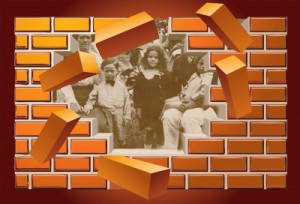
Breaking down a brick wall
This photo is of the Brandon family who lived at Farleigh
Courtesy of Teresa Hand (nee Coogan)
At some time in their family history research, genealogists discover some gems of information which help them to unlock another door. However, they also encounter numerous pitfalls which can feel, at the time, if all of the hard work has been for nothing. This page is where we can share those tips and pits moments so that others can benefit from what we’ve learnt or what to avoid.
Working out the cousin relationship
Sometimes it can be confusing trying to work out how people are related to you. Most of the people on the family tree will be your cousins but which kind of cousin?
If you and person X have a grandparent in common, you are first cousins.
If you and person X have the same great grandparent, then you are second cousins.
If you and person X have the same great great grandparents, then you are third cousins.
If there is a relative who is one level (up or down) from you, then they are said to be your first cousin once removed. For example, your first cousin has a child, then that child is your first cousin once removed. Alternatively, you are a first cousin once removed from your mother’s first cousin. If the difference is two generations, whether up or down, then they are twice removed and so on. For example, if the child of your first cousin who is your first cousin once removed, also has a child, then this child is your first cousin twice removed.
